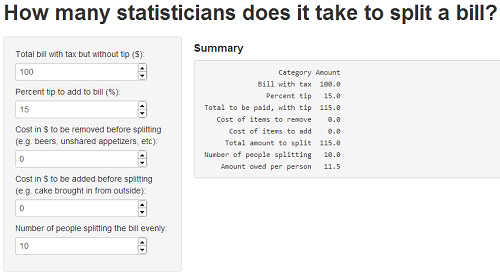Finally, another semester over. I’ll post my 2nd-semester reflections soon… but meanwhile, who wants to grab a drink?
If you’re in Pittsburgh this Saturday, come join me and my classmates for a pub crawl, at the South Side bars on E Carson St (around 11th to 22nd St). We plan to start at The Library (2302 East Carson St) around 5:30 or 6pm, and go from there. If you come later, I’ll try to update our location here or on Twitter with hashtag #statbeer.
The plan:
Although I can’t claim originality (a web search turns up this), I believe I came up with this independently: I propose using Markov Chain Monte Carlo (MCMC) to stage a bar crawl and/or using the bar crawl metaphor to explain MCMC.
The MCMC Bar Crawl* (a.k.a. Barkov Chain Monte Crawlo) is simple:
- We randomly propose a nearby bar to visit
- We vote: how many people like that bar better than where we are now?
- If it’s not unanimous, roll a die to see whether we stay here or move there
- Have a drink and repeat
* (Basically a Metropolis sampler from the multinomial distribution on our bar preferences.)
Update: this was a success and we’ll do it again. See also SMBC’s Bayesian Drinking Game.

